Review for Mothra
Introduction
When Eureka Films announced that November would be Ishiro Honda month, I suddenly realised that there was a massive gap in my cinema experience. I had never watched a classic Kaiju movie. That’s despite me having seen more than a few modern versions, and plenty of kaiju anime. I even got the original Godzilla free with a newspaper, although I’ve yet to see it once. Ishiro Honda directed the original Godzilla, and that sparked off a whole subsection of sci-fi fantasy in Japanese cinema from the late fifties onwards. While Ishiro Honda directed The H-Man (1958) and Battle in Outer Space (1959), the double feature released by Eureka, they aren’t technically kaiju movies. I had a hard time getting on with those films, and I found a fair bit to criticise. That’s taken the shine off the high point of the Ishiro Honda month, the second best known giant monster in Japanese cinema, Mothra (1961). My expectations may have been unfairly lowered.
You’d think a nuclear test site would mean that radiation would be the cause of all the problems facing the protagonists again, but not this time, when a ship is wrecked during a typhoon, and survivors are found on Infant Island. It may have been ground zero for an atomic test, but the survivors are free of radiation sickness, and say that previously unheard of natives gave them an elixir that allowed them to survive. That kind of mystery deserves investigation, and Japan teams up with the world’s superpower Rolisica to send an expedition.
However, the expedition is led by an unscrupulous profiteer named Nelson, and when they get to the island and discover a fecund jungle where there should have been a radioactive blast zone, he’s looking for something to exploit. He finds that in two fairies, women barely a foot high, with telepathic abilities and a siren song. He and his henchmen are going to be rich; but these fairies are singing for help from the mysterious Mothra. As cities start being ravaged, the fate of the human race lies in the hands of an intrepid reporter named Fukuda, his photographer Michi, and a linguist named Chujo.
You get two versions of Mothra on this disc, the English dub version from Columbia (90:12), and the Japanese version from Toho (100:51). For the purposes of this review I watched the Japanese version.
Picture
Mothra is presented in 2.35:1 widescreen 1080p format with PCM 2.0 Mono English with SDH subtitles and signs on the English version, and PCM 2.0 Mono Japanese with translated subs on the other. The image is clear and colourful, free of dirt and print damage, and has clearly seen no little restoration. Detail levels are good, and there’s no sign of visible compression. There is a bit of flicker in the occasional scene, but by and large Mothra has cleaned up a treat. The audio too is fine, the dialogue clear, and the action and music comes across well, even if it is centrally focused. The subtitles are free of typos and are accurately timed, but there is one minor flub at 4:36, where the caption “Director Ishiro Honda” randomly flashes up in the middle of some translated dialogue.
Extras
The first run release of Mothra will come with a 60-page booklet with four essays on the film and plenty of imagery from the production and distribution as well.
The disc boots quickly to a static menu where you have the option to play the English and Japanese versions (although these open other menu screens where you can toggle subtitle options and select other version specific extras before playing the film).
On the main menu page you have the following extras.
Kim Newman Interview (14:42).
Two Stills Galleries looking at Production Stills & Ephemera, and Concept Art.
The US Teaser and Theatrical Trailers.
From the English version menu you can access the audio commentary from writers Steve Ryfle and Ed Godziszewski.
From the Japanese version menu you can access the audio commentary from Film Historian David Kalat and an isolated Music and Effects track in PCM 2.0 mono.
Conclusion
I love moments of discovery, little revelations, which may be completely personal to me, but which give me a warm glow, and when that happens in a movie I’m watching, I will invariably leave that film with a positive feeling. Yesterday I learned that a dream sequence in an anime series I have loved for almost twenty years, heavily references Mothra. This is going to be a positive review.
It’s positive for a more meaningful reason as well, as when I reviewed the Ishiro Honda double feature, I had two main criticisms of the films, which Mothra actually addresses. With both The H-Man and Battle in Outer Space, I felt the films were let down by weak and clichéd characterisations, while the effects work in the latter film seemed overambitious and not too effective.
There are plenty of effects in Mothra, but the quality of the work is really a lot more impressive. The model work is more detailed and has the sense of weight and reality that was lacking in Battle in Outer Space, while the composite work looks better as well. There is a consistency to the effects that makes it easier for the suspension of disbelief.
Mothra is also helped by a vivid and memorable roster of characters. It’s another multinational cast, obviously ensuring the film works in overseas markets as well, although this time the fictional country of Rosilica obviously stands in for America. This time we have a clear and scenery-chewing villain in Nelson who holds the attention, while the plucky reporter Fukuda incongruously, but effectively combines a sense of naivety and cynicism as he goes about his work. The photographer Michi makes for a nice foil to his antics, while the linguist Chujo adds a little gravitas, but also some enthusiasm as well. It makes it easier to engage with the story when characters experiencing it are vivid and engaged as well. It makes the film feel open to possibilities, the story uncertain; unlike the other two films I reviewed which felt more like they were unfolding by rote, progressing on rails.
The premise of Mothra is initially quite deceptive with talk of a nuclear test site and radioactivity putting the audience in mind of Godzilla once more. But this time, the strange thing about Infant Island is the absence of radioactivity in the shipwreck survivors, and the revelation that there are natives on the island living in a jungle untouched by the bomb. Mothra becomes much more of a magical fantasy, given that there is no explanation given for this, or the two fairies that the expedition finds, identical twins, just a few inches high, and with strange, telepathic abilities.
The film borrows from King Kong with the Nelson character, an avaricious opportunist who sees the profit in putting singing fairies on the stage, whether they want to or not. He doesn’t realise that they are singing praise to Mothra, and Mothra can hear their prayers, their calls for help. This film also gives us the life-cycle of a Mothra, from egg, to giant caterpillar, to cocoon to Mothra. Having a giant, invulnerable caterpillar crawling through Tokyo is bad enough as it lays waste to all in its path, but the adult moth(ra) is even worse, with the gust from its giant wings enough to lay waste to entire city blocks.
There is no malice in Mothra; she’s just a force of nature instinctively coming to the fairies that called her, and the film treats her as such, choosing not to anthropomorphise the monster. The film does sag for me in the last act, when Mothra’s on the rampage and the military throw everything they have against the monster to no avail. There’s a little too much panicked evacuation scenes, and the tanks and the planes, and the atomic beam weapons go on for a little too long.
Yet overwhelmingly, and compared to The H-Man and Battle in Outer Space, Mothra has been a far more fulfilling experience for me, and most of that is down to the characters in the film, written more effectively and with a lot more personality. The fantastic origins of Mothra and the back-story of the island gives it a far different feel, something akin to a Doug McClure adventure, while the production design takes the film in a different, psychedelic Technicolor direction. There is much to appreciate about Mothra, and with this splendid release from Eureka, you have no reason not to discover its weird charms.
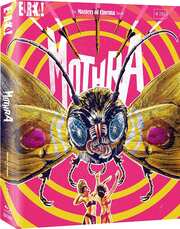






























































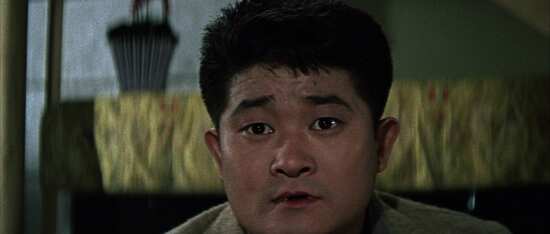
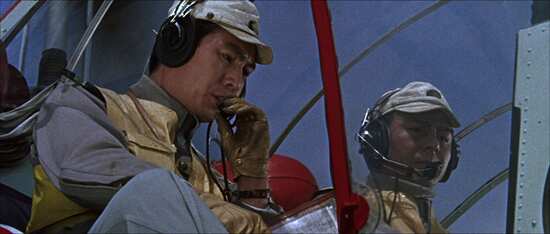
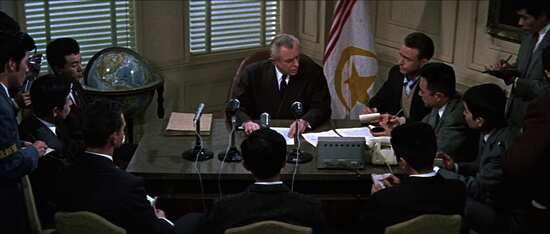

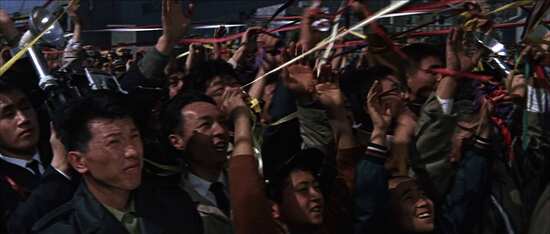
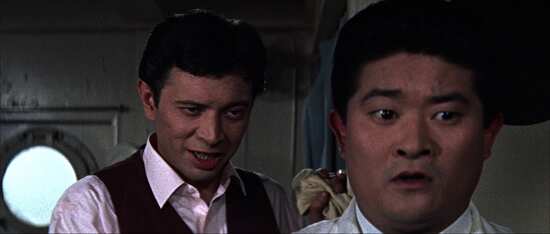
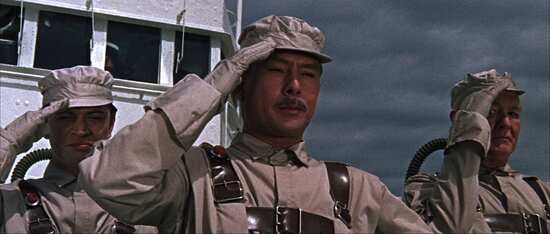

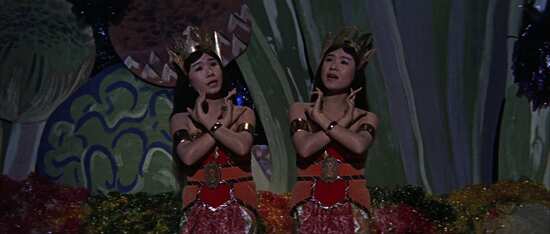
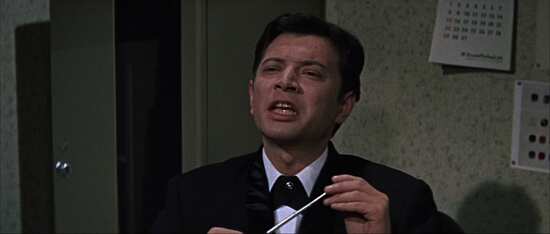
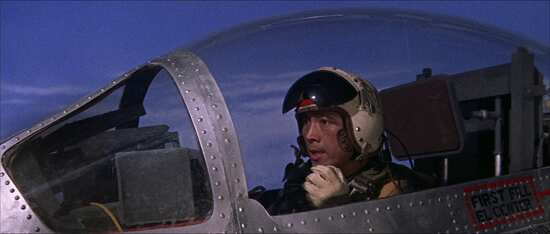
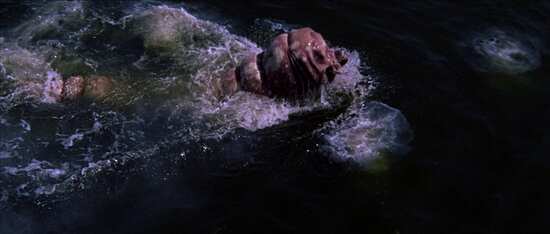

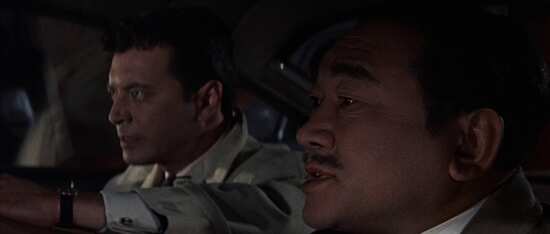

Your Opinions and Comments
Be the first to post a comment!